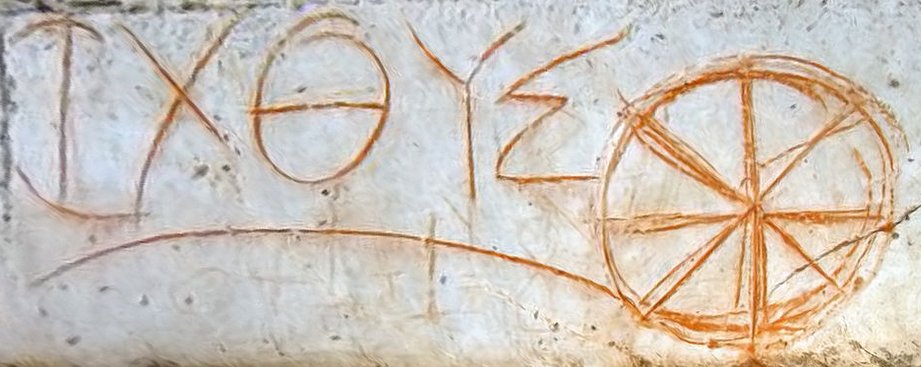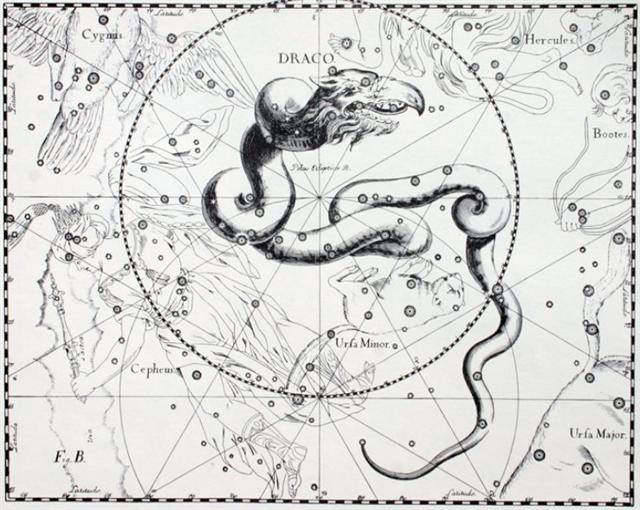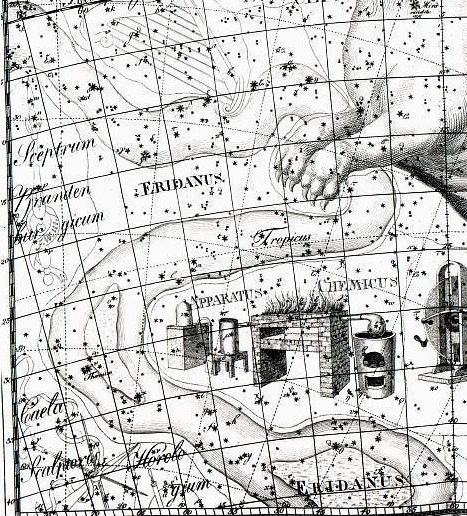They were 10 who recited (he rutu atatahi te angahuru) with all their powers in order to stop the canoe of Ava Rei Pua from arriving too early:
Ava. 1. To remain (of dregs, of very small objects in the water or in a place which used to be full of water); he-ava, he-paroparoko, expression, said when small fishes swarm in the water holes along the coast. 2. Furrow, rut, groove, crevice, fissure; he-hahata te ava o te henua, a crevice opened in the ground. 3. To strike, to hit; to sound like a blow; ku-ava-á te poko (see also hatutiri), thunder sounded. Vanaga. Áva-áva. 1. To lift up. 2. to strike, to hit repeatedly; he-áva-áva i te koreha a ruga a te ma'ea, he struck the eel several times against a stone (to kill it). Vanaga. 1. a) Distance, distant; ava poto, a short distance. b) Space, interval. PS Mq.: ava, distance, space, interval. Ta.: ava, interval. The simpler form of the root is va, which is not found in Rapanui and Marquesan, and in Tahiti is narrowly restricted to the spacing of thatch, but in Nuclear Polynesia and in the Tongafiti migration [va] is expressive of the sense of distance and interval. In Samoa the same meaning is carried by an advanced form of the root, and ava in this sense is not found elsewhere. Its reappearance in these three languages of Southeast Polynesia points to a direct migration from Samoa. 2. Channel, strait, pass, passage, breach, entrance to a harbor. Avaava. 1. a) To strike, to slap, to grind, to dent. b) To correct, to maltreat, to exterminate. 2. Angle, chink. 3. Tobacco. In this nook of Polynesia tobacco and its common method of pleasurable use are alike imported. In Melanesia tobacco was indigenous but was employed for the business of medication and not to assuage the conditions of cannibal society. The leaves when fully grown were shredded, macerated and employed as a cataplasm. Applied upon the abdomen it was the principal agency in the production of emesis and catharsis. Applied secretly in axilla [arm-pit] it superinduced the ecstasy of the priest when in the trance of possession by his god. In Fiji it was used as an insecticide. Avahi, a wedge, to split; avahiga, part, partial; avahiga kore, inseparable. Avamouga (ava 1 - mouga 2), valley. Churchill. 1. Awa, s. Haw., harbour, cove, creek, channel; awaa, to dig as a pit, a ditch; awawa, a valley, space between two prominences, space between the fingers and toes. Tah., ava, a harbour, channel. Sam., ava, a boat-passage, opening in the reef, anchorage; v. to be open, as a doorway. Marqu., ava, interval, passage. The Malgasse ava, a rainbow, may refer to this family, in the sense of an arch, a bay, a hollow, curved space on the firmanent. Sanskr., avaţa, a pit; avata, a well; avatas, below, in the lower regions; ava-kâça, space, interval; avama, low, opp. to high, probably all referring themselves to ava, prep. with the primary sense of 'down, below, away, off', as its derivatives plainly indicate. 2. Awa, s. Haw., fine rain, mist. Tong., Sam., afa, storm, hurricane; afu, a waterfall. N. Zeal., awa, a river. Fiji., cava, a storm. Mal., awap, mist, dew. Sangvir Island, sawan, a river. Rotti, Ofa, id. Tagal., abo-abo, rain. Malg., sav, mist, fog. Sanskr., ap, apas, water. Lat., aqua; Romain, ava, water, rain-water. Goth., ahwa; O. H. Germ., ouwa, water. Germ., aue, au, brook. Swed., å, id. Irish, abh, water; abhan, river. Welsh, aw, fluid. Pers., âw, âb, water.A. Pictet ... refers the Celtic and Persian forms to a Sanskrit root av, 'ire', whence avana, rapidity, avani, river; and he refers the Latin and Gothic forms to a Sanskrit root aç or ak, 'permeare, occupare', from which spring a number of derivatives expressive of 'le mouvement rapide, la force pénétrante' ... In view of the Polynesian forms, Haw., Sam., Tagal., and their meanings, I prefer to follow Benfey and Bopp in referring the West Aryan as well as the Polynesian forms to the Sanskrit ap, whether that be the original form itself or a contracted modification of it. It seems to me to have been in the very nature of language that men in the olden times should have commenced by giving distinct and instantaneous names to objects around them, and to natural phenomena, before they invested those objects with names derived by after-thought and reflection from this or that quality characteristic of those objects. Many, if not most, of such original names were doubtless lost in the course of ages, and supplanted by synonyms derived from and expressive of some quality or other in the objects named; but many still survive to baffle the analysis of philologists, and to assert their claims to priority over synonyms that must necessarily have been of later formation. 3. Awa, s. Haw., Sam., Tah., name of a plant of a bitter taste, but highly relished throughout Polynesia - 'Piper Methysticum' - from which an intoxicating drink is made; the name of the liquor itself. Tong., N. Zeal., Rarot., Marqu., kawa, id. Haw., awa-awa, bitter. Sam., a'awa, id. Tong., N. Zeal., kakawa , sweet. Sanskr., av, to please, satisfy, desire (Benfey); ava, nourishment (Pictet). Pers., âwâ, nourishment; abâ, bread. Lat., aveo, crave after, long for; avena, oats. See au 1. Fornander. Possibly this was referring to how the Moon measure 354 (= 12 * 29½) was 10 less than 364 (= 4 * 91), for 2 * (182 - 177) = 10. The Moon went clockwise around the island and the Sun in the opposite direction. However, the text also seems to state that the first two constituted a pair, followed by a set of 8. A Capital letter both for number 1 (Ko Honga) and for number 3 (Ko Nuku kehu). And we should then take special notice of Sive and Bu (with letters foreign to Easter Island). Possibly they were meant to point at day 360 respectively 364. ... Another name for Mercury was Hermes and Hermes Trismegisthos (thrice-mighty) could have referred to the fact that there were 3.14 * 115.88 = 364.0 days for the cycle of the Earth around the Sun. Although the calendar has 365 days for a year this is due to the fact that the Earth has to turn around an extra day in order to compensate for how the direction to the Sun changes during a year ... We have earlier come to understand that Oti (immediately preceding Sive) meant final ('tail'), and as to Tuki (preceding Bu) I have suggested this word could refer to the shock at making 'Landfall'. ... Hanga Roa (the Great Bay) for making landfall (tuki) in order to multiply (ku-kau) together with Okahu (oka-hu), the maiden star-watcher (uka ui hetuu) ... (E:38) ... During his descent the ancestor still possessed the quality of a water spirit, and his body, though preserving its human appearance, owing to its being that of a regenerated man, was equipped with four flexible limbs like serpents after the pattern of the arms of the Great Nummo. The ground was rapidly approaching. The ancestor was still standing, his arms in front of him and the hammer and anvil hanging across his limbs. The shock of his final impact on the earth when he came to the end of the rainbow, scattered in a cloud of dust the animals, vegetables and men disposed on the steps. When calm was restored, the smith was still on the roof, standing erect facing towards the north, his tools still in the same position. But in the shock of landing the hammer and the anvil had broken his arms and legs at the level of elbows and knees, which he did not have before. He thus acquired the joints proper to the new human form, which was to spread over the earth and to devote itself to toil ... But from the assumption of Mercury (Hiro) being the one responsible for the important rebirth and growth in the agricultural society also on Easter Island, we could furthermore try to count 3 * 115 = 345 (Hermes Trismegisthos),
and from there to add 10 in order to reach the solstice:
This idea seems to be supported by the structure at the beginning of side b on the C tablet, for instance:
And from *Ca14-24 (→ 4 * 84) up to and including glyph number 396 (→ 336 + 60) we can count to 10:
|
|||||||||||||||||||||||||||||||||||||||||||||||||||||||||||||||||||||||||||||||||||||||||||||||||||||||||||||||||||||||||||||||||||||||||||||||||||||||||||||||||||||||||||||||||||||||||||||||









